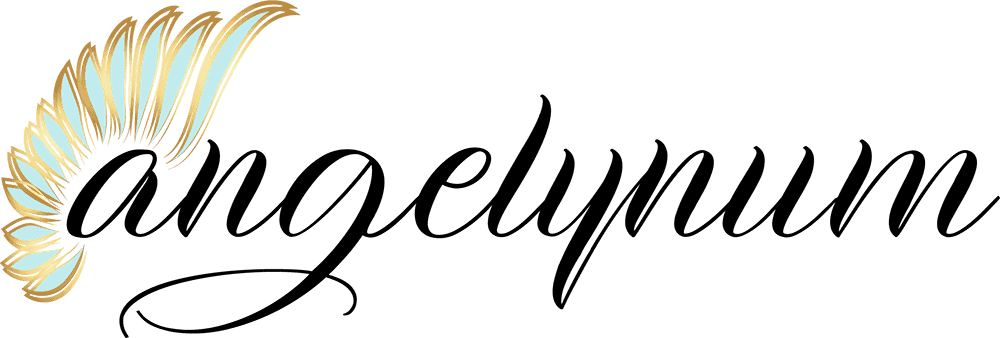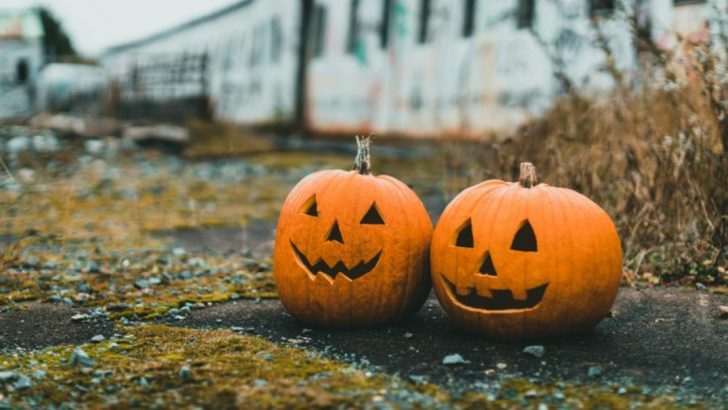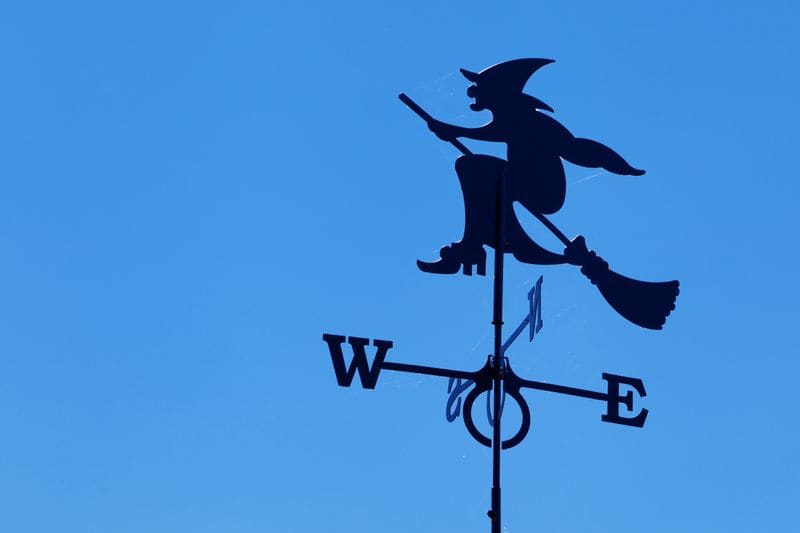Halloween wouldn’t be the same without its spooky symbols that decorate our neighborhoods every October.
From carved pumpkins glowing on porches to black cats crossing moonlit streets, these icons have become part of the holiday’s magic. But have you ever wondered where these mysterious symbols came from and what they really mean?
Understanding their origins reveals fascinating stories from ancient folklore, superstition, and cultural traditions that have shaped the Halloween we celebrate today.
1. Black Cats
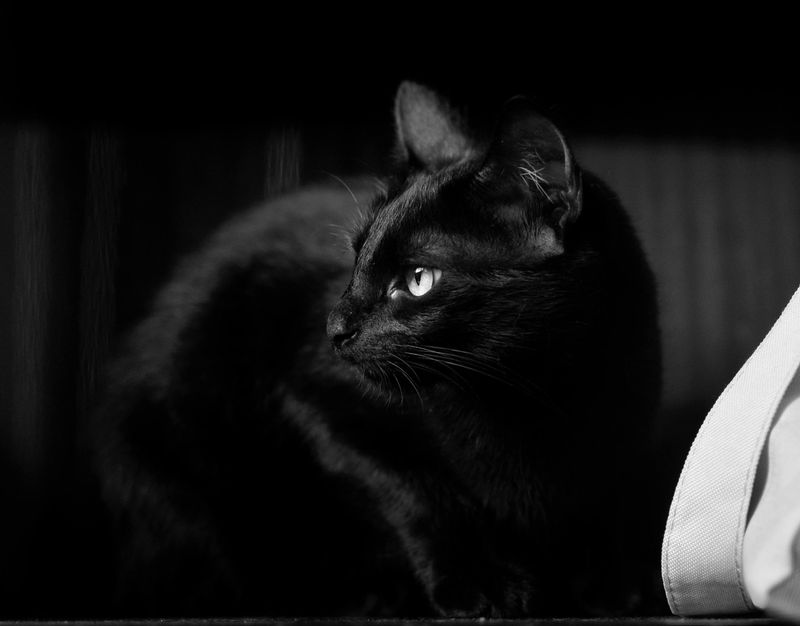
With their mysterious eyes and silent movements, black cats have prowled through superstition for centuries. During medieval Europe’s darkest days, people believed these midnight-colored felines were witches’ companions or even witches who had transformed themselves into animal form. This fear grew so intense that black cats were often persecuted alongside accused witches during the witch hunt era.
The superstition that a black cat crossing your path brings misfortune stems from these old beliefs. Ironically, in some cultures like ancient Egypt and parts of Britain, black cats were considered lucky and brought prosperity. Today, black cats remain Halloween icons, representing the mysterious connection between the natural and supernatural worlds.
2. Bats
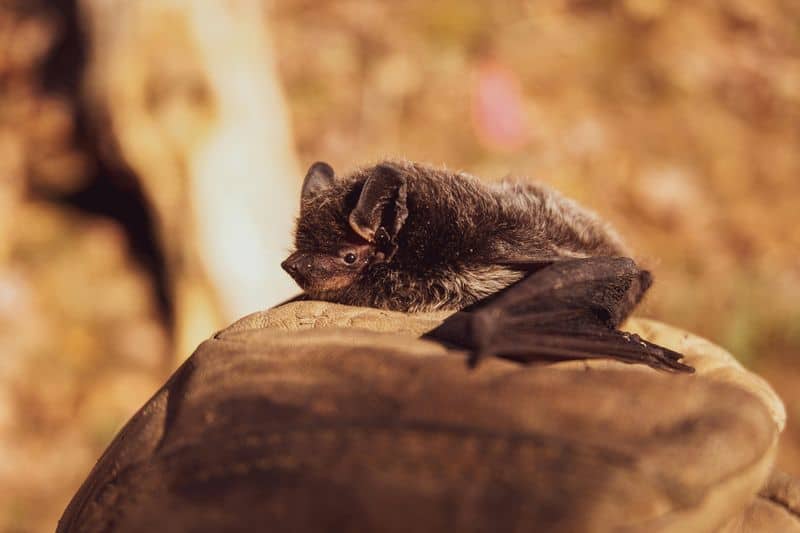
Ever notice how bats seem to appear out of nowhere on Halloween night? Their connection to the holiday actually started with ancient Celtic celebrations of Samhain, when communities would light massive bonfires to mark the end of harvest season. These fires attracted swarms of insects looking for warmth and light, which naturally drew hungry bats looking for an easy meal.
Watching bats swirl around the flames must have seemed magical and otherworldly to ancient observers. Later, vampire legends from Eastern Europe sealed the bat’s reputation as a creature of darkness. Their nocturnal habits and unusual appearance made them perfect symbols for Halloween’s eerie atmosphere, bridging the gap between reality and supernatural folklore.
3. Witch’s Broomstick
Why would witches choose something as ordinary as a broomstick for magical transportation? This curious association began during the 15th-century witch trials, when paranoia about witchcraft swept through Europe like wildfire. Accusations flew as freely as the witches were supposedly flying on their humble household cleaning tools.
Some historians believe the connection came from pagan fertility rituals where women would leap high while straddling poles or brooms in fields, symbolically encouraging crops to grow tall. Others point to hallucinogenic ointments that caused sensations of flying when absorbed through the skin. Whatever the true origin, the image of a witch soaring across the moon on her broomstick has become one of Halloween’s most recognizable and enduring symbols.
4. Jack-o’-Lanterns
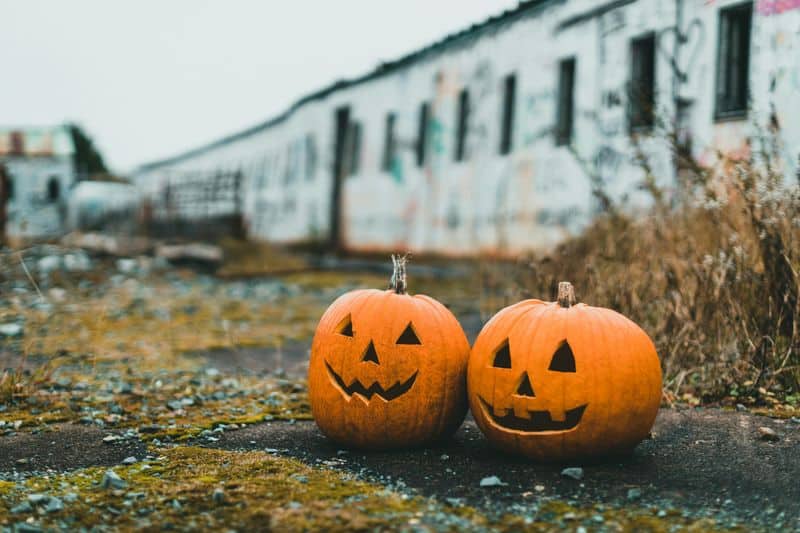
The flickering face of a jack-o’-lantern has welcomed trick-or-treaters for generations, but its roots trace back to an Irish legend about a clever trickster named Stingy Jack. According to the tale, Jack managed to outsmart the Devil himself not once but twice, trapping him and making him promise never to take Jack’s soul. When Jack eventually died, he was denied entry to both heaven and hell, leaving him to wander the earth forever.
The Devil tossed Jack a burning coal to light his way through the darkness. Jack placed it inside a hollowed-out turnip to create a makeshift lantern. Irish immigrants brought this tradition to America, where pumpkins were more abundant and easier to carve than turnips.
5. Ghosts
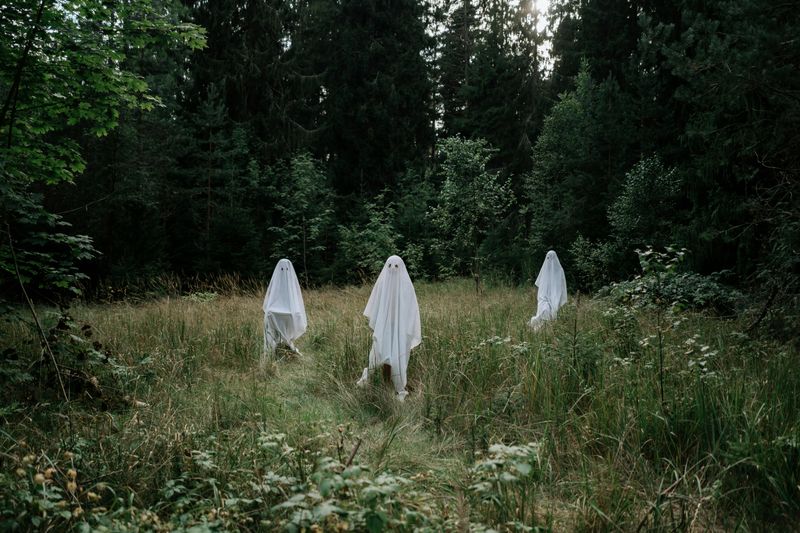
Floating through walls and haunting old houses, ghosts represent our oldest fears and deepest questions about what happens after death. The ancient Celts believed that on Samhain night, the boundary separating our world from the spirit realm grew incredibly thin, almost transparent. This thinning allowed the souls of the dead to return and walk among the living for one special night each year.
People would leave food offerings outside their homes to appease wandering spirits and wore costumes to disguise themselves from potentially harmful ghosts. These protective traditions evolved into modern trick-or-treating and costume parties. Whether you believe in them or not, ghosts remind us that Halloween connects us to ancient questions about mortality and the mysteries beyond.
6. Skeletons
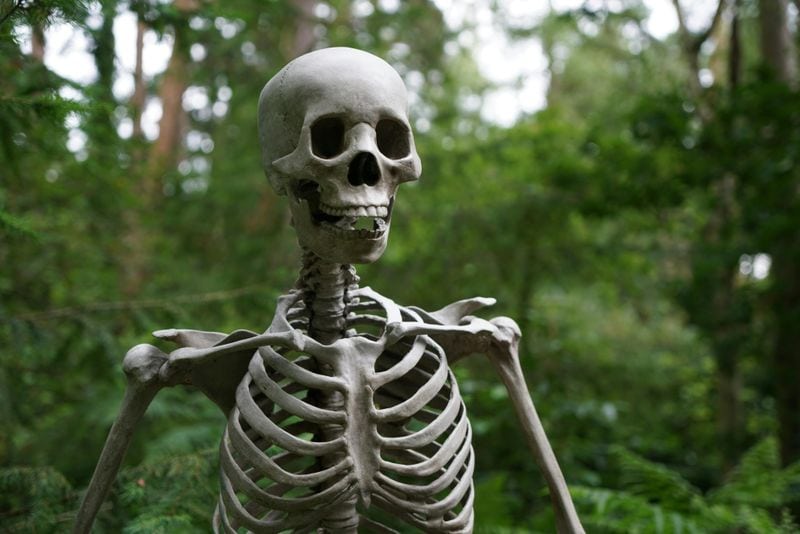
Grinning skulls and rattling bones might seem morbid, but skeletons serve as Halloween’s most honest symbol. They strip away all pretense and remind us that beneath our differences, we’re all the same. Ancient cultures from Mexico’s Day of the Dead to Europe’s medieval dances of death used skeleton imagery to celebrate rather than fear mortality.
During the Middle Ages, artists created elaborate skeleton dances showing that death comes for everyone, from peasants to kings. This democratizing message made death less terrifying by acknowledging it as a universal experience. Today’s dancing skeleton decorations maintain this tradition of confronting our fears with humor. By making skeletons part of Halloween fun, we’re continuing an age-old tradition of facing mortality with courage and even celebration.
7. Spiders
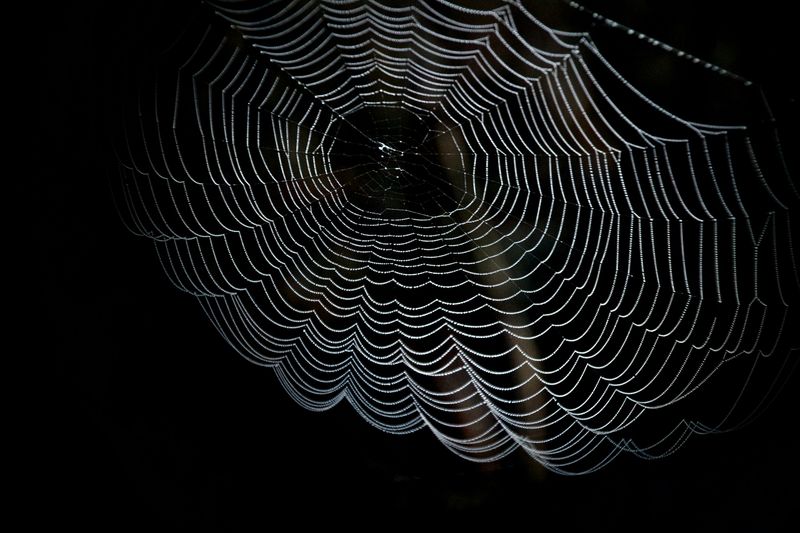
Finding a spider web stretched across a forgotten corner sends shivers down most spines, which is exactly why these eight-legged architects became Halloween favorites. Spiders weave their intricate traps in dark, dusty places where few dare to venture, making them perfect residents of haunted houses and abandoned buildings. Their patient, predatory nature adds to their unsettling reputation.
Medieval folklore connected spiders to witches, believing they were either witches’ helpers or ingredients in magical potions and spells. Some superstitions claimed that seeing a spider on Halloween meant a deceased loved one was watching over you. Whether you find them fascinating or frightening, spiders and their delicate webs symbolize the hidden mysteries lurking in shadowy places we’d rather not explore.
8. Scarecrows
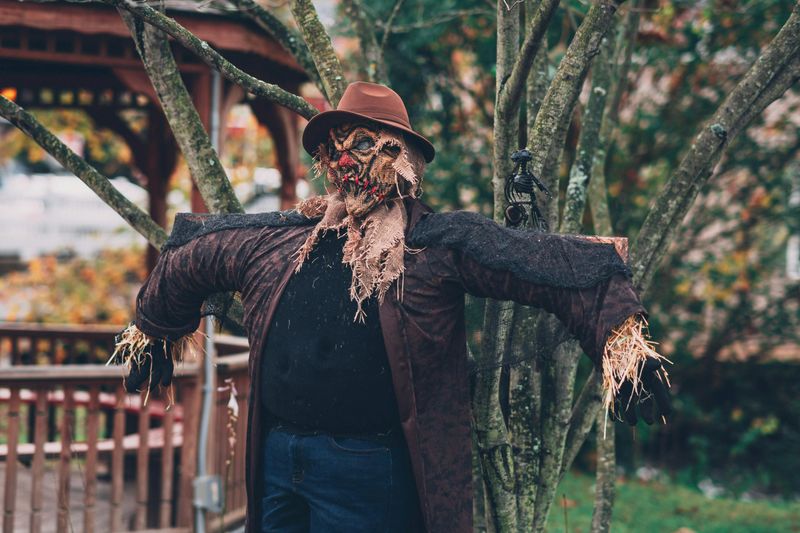
Standing guard over autumn fields with outstretched arms, scarecrows started as practical farm tools but became symbols of something far more sinister. Farmers created these human-like figures to protect their precious crops from hungry birds, dressing them in old clothes and stuffing them with straw. Their human shape combined with their lifeless stillness creates an unsettling effect that makes them natural Halloween icons.
Scarecrows represent the harvest season when summer’s abundance gives way to winter’s death, placing them perfectly at Halloween’s threshold between seasons. Their ragged appearance and blank faces suggest something that was once alive but isn’t anymore. Stories of scarecrows coming to life at night have frightened children for generations, cementing their place in Halloween tradition.
9. Full Moon
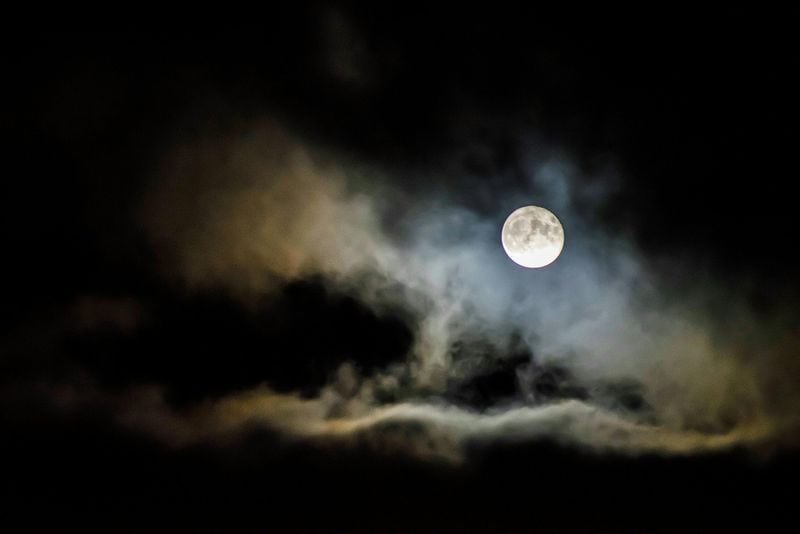
Hanging heavy in the October sky, the full moon transforms ordinary nights into something magical and potentially dangerous. For centuries, people believed the moon’s phases influenced human behavior and supernatural activity, with the full moon representing peak power. Werewolves supposedly transformed under its light, while witches gathered for their most powerful rituals when the moon was fullest and brightest.
Ancient cultures tracked time by lunar cycles, and many harvest festivals occurred during full moons when farmers could work later into the evening. This practical benefit mixed with supernatural beliefs to create the moon’s mystical reputation. Though Halloween doesn’t always fall on a full moon, the image of one illuminating a spooky night has become inseparable from the holiday’s atmosphere and imagery.
10. Witch’s Cauldron
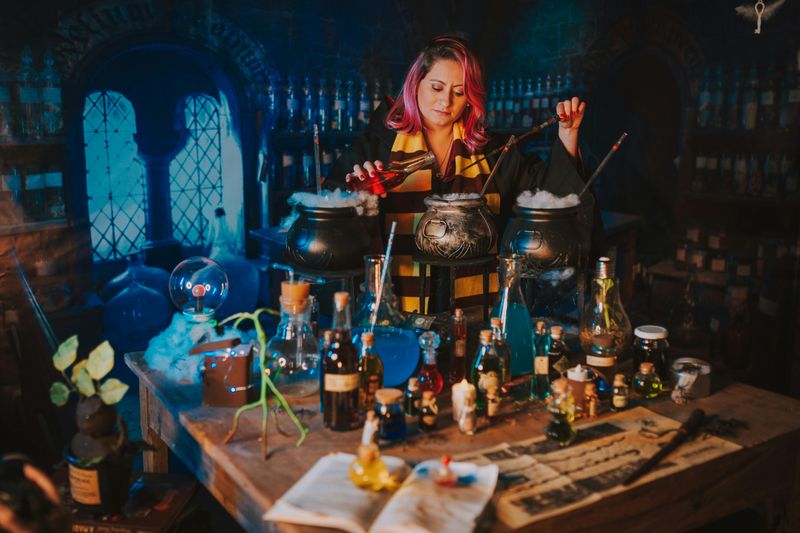
Bubbling with mysterious potions and magical brews, the witch’s cauldron represents transformation at its most powerful and unpredictable. This iconic cooking vessel appears in countless fairy tales and legends, always containing something that will fundamentally change whoever tastes it. From healing elixirs to deadly poisons, the cauldron’s contents could bring fortune or disaster depending on the witch’s intentions.
Ancient Celtic and pagan traditions viewed cauldrons as sacred objects representing abundance, rebirth, and the womb of the goddess. Witches supposedly used them for scrying, which means gazing into water to see visions of the future. The cauldron’s connection to water, transformation, and feminine power made it essential to witchcraft symbolism. Today, it remains Halloween’s ultimate symbol of magical mystery and supernatural cooking.
